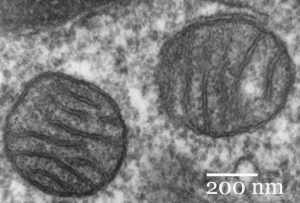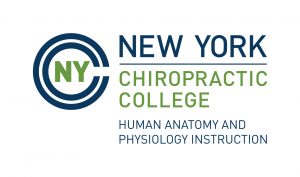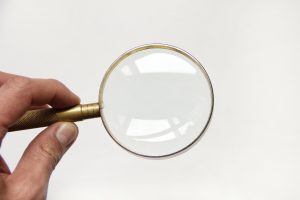Smooth Teaching with Slides: Animations to Dramatize the Story of Anatomy & Physiology | Science Updates
TAPP Radio Episode 89
Episode
Episode | Quick Take
Host Kevin Patton outlines several new discoveries, including the function of background noise in the brain, how exercise triggers immunity, a possible blood marker for longevity, and how mitochondria are organized during cell division. And he discusses how easy animation effects can help students focus on important elements of the story of anatomy and physiology.
- 00:00 | Quotation & Intro
- 00:47 | Brain’s Background Noise
- 08:06 | Sponsored by AAA
- 09:12 | How Exercise Triggers Immunity
- 13:30 | Sponsored by HAPI
- 14:41 | Mitochondria During Cell Division
- 22:10 | Sponsored by HAPS
- 23:03 | How Old Will We Get
- 26:22 | Focus Our Story on Slides
- 35:22 | The Scoop About Segments
- 36:33 | Smooth Slides for a Smooth Story
- 43:56 | Staying Connected
Episode | Listen Now
Episode | Show Notes
We deal with our mind from morning till evening, and it can be our best friend or our worst enemy. (Mathieu Ricard)
Brain’s Background Noise
7 minutes
The so-called “background noise” in an electroencephalogram (EEG)—that aperiodic data that contrasts with the periodic waves we usually look for—may be a measure of consciousness.
- Brain’s ‘Background Noise’ May Hold Clues to Persistent Mysteries (Quanta magazine article) my-ap.us/3lisLqW
- Most brain activity is “background noise” — and that’s upending our understanding of consciousness (Salon magazine article) my-ap.us/30KWq2q
Sponsored by AAA
1 minute
A searchable transcript for this episode, as well as the captioned audiogram of this episode, are sponsored by the American Association for Anatomy (AAA) at anatomy.org.
Don’t forget—HAPS members get a deep discount on AAA membership!
Sign up for the new VDD or Virtual Dissection Database. You can access it at www.virtualdissectiondatabase.com
How Exercise Triggers Immunity
4 minutes
We know that exercise has many beneficial effects in the body, including stimulation of the immune system. A new discovery in mice suggests that the same pressure that triggers bone growth with exercise also triggers the precursors to lymphocytes in bone marrow.
- Exercise generates immune cells in bone (article in Nature) my-ap.us/30JA4i5
Sponsored by HAPI Online Graduate Program
1 minute
The Master of Science in Human Anatomy & Physiology Instruction—the MS-HAPI—is a graduate program for A&P teachers, especially for those who already have a graduate/professional degree. A combination of science courses (enough to qualify you to teach at the college level) and courses in contemporary instructional practice, this program helps you be your best in both on-campus and remote teaching. Kevin Patton is a faculty member in this program. Check it out!
Mitochondria During Cell Division
7.5 minutes
We know how the nuclear genome is organized into two equivalent groups during cell division—at least the broad strokes. A new discovery sheds light on complex mechanisms that distribute the mitochondrial genome.
- Actin cables and comet tails organize mitochondrial networks in mitosis (article in Nature) my-ap.us/30J7cX4

Sponsored by HAPS
1 minute
The Human Anatomy & Physiology Society (HAPS) is a sponsor of this podcast. You can help appreciate their support by clicking the link below and checking out the many resources and benefits found there. Watch for virtual town hall meetings and upcoming regional meetings!
How Old Will We Get?
3 minutes
A study of 90- to 100-year-olds suggests that there’s a blood marker that might give clues to our longevity.
- More than 100 centenarians help to reveal a biomarker for long life (news item in Nature) my-ap.us/2NlN8a9
- A neuronal blood marker is associated with mortality in old age (article in Nature Aging) my-ap.us/30Kxngf
Focus our Story on Slides
9 minutes
It’s best to have few, if any, phrases of text on our teaching slides—so that students will focus on our orally presented story of anatomy and physiology. But when we do need more than a phrase or two—a term or two—then using simple animations to bring them in one at a time works well.
- Slides Serve the Story of Anatomy & Physiology | Episode 66
- PowerPoint: Animating Text and Objects (video) my-ap.us/30NBeZW
The Scoop About Segments
1 minute
Chunking. I use segments to divide the episode partly to give room for sponsor messages (thank you, sponsors!), but also to chunk the content so that it doesn’t feel like you are drinking from a fire house. You know?… a bit of a cognitive “breather” before moving on to the next thing.
- How to use chapter markers in Apple’s Podcasts app (a how-to for flipping from segment to segment; also works similarly in other podcast platforms) my-ap.us/3bVFoVZ
Smooth Slides for a Smooth Story
7.5 minutes
Smooth and subtle animations for bringing in new slide elements work better that jarring “appear” animations or wildly sliding or jumping or scrolling animations. This is especially important when considering accessibility for those with motion-sensitive conditions. Smooth… that should be our mantra!
- The Golden Voice Behind All Those Ken Burns Documentaries (about Peter Coyote, mentioned in this episode) https://my-ap.us/3tranz1
Need help accessing resources locked behind a paywall?
Check out this advice from Episode 32 to get what you need!
Episode | Captioned Audiogram
Episode | Transcript
The A&P Professor podcast (TAPP radio) episodes are made for listening, not reading. This transcript is provided for your convenience, but hey, it’s just not possible to capture the emphasis and dramatic delivery of the audio version. Or the cool theme music. Or laughs and snorts. And because it’s generated by a combo of machine and human transcription, it may not be exactly right. So I strongly recommend listening by clicking the audio player provided.
 This searchable transcript is supported by the
This searchable transcript is supported by the
American Association for Anatomy.
I'm a member—maybe you should be one, too!
Quotation & Intro
Kevin Patton:
The biochemist turned to Buddhist monk Matthieu Ricard once said, “We deal with our mind from morning till evening, and it can be our best friend, or our worst enemy.”
Aileen:
Welcome to The A&P Professor, a few minutes to focus on teaching human anatomy and physiology with a veteran educator and teaching mentor, your host, Kevin Patton.
Kevin Patton:
This episode has all kinds of updates in human biology. And I talk about how to dramatize your story with animated slide elements.
Brain’s Background Noise
Kevin Patton:
That was a recent discovery that came out of Germany that I heard about just a few weeks ago that really struck a chord with me. And before I get into that discovery and why it struck a chord with me, I want to emphasize that like most of the new discoveries that I report on in this podcast, they’re just that. They’re new discoveries. They haven’t really been vetted by years of replication and other kinds of experimentation. So I want to really nail them down and be widely accepted with the confidence that usually goes along with something being a theory, or at least a widely held hypothesis. So this is like that, this is new. But it’s exciting. And it seems reasonable, but you never know until we do more testing, right?
Kevin Patton:
And what it is, is it has to do with the nature of the electroencephalogram or EEG, and how that is used to determine what kinds of activity is going on inside the brain. And what we’re mostly used to is that somewhat periodic kind of brainwave, like the alpha waves and the beta waves and so on, and how those are used to identify what’s going on in the brain, and even used clinically to identify when things are going wrong in the brain. Or certain functions in certain places are not working the way they’re supposed to. And that’s useful.
Kevin Patton:
But we also know that there was a lot of what you could call background noise. There was this aperiodic signaling. And I’ve always been interested in that balance between phenomena in our body, functions that can be measured. And when we measure them, sometimes they appear to present when they’re recorded periodic fluctuation, meaning back and forth, back and forth.
Kevin Patton:
And then we also sometimes see that there are functions going on that are aperiodic, and those are often harder to figure out. And sometimes, we just relegate them to ‘background noise.” They’re not useful. They’re just sort of jitter that’s in there. And maybe even an artifact of the technology that we’re using.
Kevin Patton:
And that’s why one of the reasons why it kind of strikes a chord with me. Because when I did research, I did research with heart rate in birds. I was measuring different kinds of stresses that they were undergoing in captive situations. That is in zoos and so on. So I was measuring their heart rate to see, well what kinds of management activities, what kind of things that the zookeepers are doing, or the public is doing, or a veterinarian is doing that is causing spikes in heart rate that would be indicative of a stress response?
Kevin Patton:
And I remember presenting some resting heart rate data as part of a paper at a conference. As a very young man, very new researcher. It was aperiodic. And that’s how I understood resting heart rate to be. Your heart rate doesn’t slowly go up to a certain, let’s say you started, I don’t know, 70 beats per minute. And then doesn’t go up to 75 and then rhythmically go down to 65, and then rhythmically go up to 75, and rhythmically down to 65. Yeah, it does fluctuate. But it doesn’t fluctuate in a rhythmic way. It’s aperiodic.
Kevin Patton:
So I put that data that I had made up on a slide, and there was some vigorous questioning of my whole presentation during the question and answer session by some people in ties. So they were to be believed. And here I was in my bell bottoms, which were fashionable at the time, and no tie. And they’re telling me that all my data was useless because it was just all noise.
Kevin Patton:
And I later found out that none of them had studied heart rate. And now we know that when a heart rate that normally is variable, when it becomes less variable, that’s a signal that something’s wrong. So that whole idea, even though I’m not in that area anymore, and I never really would have taken that particular direction in my research anyway, I don’t think. Even so, I’ve always been fascinated by that balance between the periodic and aperiodic. So what I usually tell my students is there are some things when you measure them in the body, they’re periodic. And if they become aperiodic, that’s probably a sign of trouble. And there are things in your body that when you measure them, they appear to be aperiodic. And when they become periodic, that’s usually a sign of trouble.
Kevin Patton:
So when I saw this discovery come out recently about the EEG and the aperiodic background noise, it really kind of pulled me in, whether I wanted to go into it or not. But I’m glad I did. Because what they’re finding out is that in studying that aperiodic so-called background noise, they’re finding that changes in that, subtle changes in that may signal our level of consciousness. It may even be, who knows, still early in the game here. It may even be a signature of consciousness itself, something that we’ve never really been able to nail down totally satisfactorily.
Kevin Patton:
And if it is, if this is something that is a better measure than anything we have now of a person’s level of consciousness, or whether they even have any consciousness going on in their brain, then oh my gosh, there’s all kinds of things we can discover about consciousness, about how the brain works, about how decisions are made, how memories are … golly, it just opens up a whole new field of research.
Kevin Patton:
But not only that, just think of the clinical applications that this is going to have. Because we’re going to be able to maybe more clearly assess what the level of consciousness is of a patient under general anesthesia. We might be able to better assess the health of a patient who’s in a coma, or whether they’re technically in a coma. We might end up creating new labels and new stages of levels of consciousness based on what comes out of this discovery. Or it might turn out to be not much of anything and we throw it away, but the possibilities are exciting being here.
Kevin Patton:
And of course, one of the issues that we run into clinically that we don’t have a satisfactory clinical answer to is at what moment does consciousness stop? And therefore, perhaps we could think of a medical definition for death or a medical point at which we can say a person is dead. And right now, there’s arguments about that, about what is the best way to designate a person as being brain dead. And this might help us with that and be more accurate with that. Or maybe even again, decide that there’s a different way of approaching that whole question than we have now.
Kevin Patton:
So as always, I have links to articles about this presentation that was given at a scientific conference in the show notes at the episode page at theAPprofessor.org/89.
Sponsored by AAA
Kevin Patton:
A searchable transcript and a captioned audiogram of this episode are funded by AAA, the American Association for Anatomy at anatomy.org. I’ve mentioned this before, but it bears repeating. If you’re already a member of HAPS, the Human Anatomy & Physiology Society, you can get a deeply discounted membership in AAA to go along with it. I was recently asked by a colleague in HAPS why they should also join AAA. And I told them that the two compliment one another. You’re not getting the same benefits in both. You’re getting two sets of different benefits that compliment each other to provide some powerful professional development support. I started to list them from my friend until I realized that if they click the benefits button in the membership tab at anatomy.org, they can see a whole lot of reasons to add AAA membership to their professional A&P teaching portfolio. You should try it.
How Exercise Trigger Immunity
Kevin Patton:
We have an amazing therapy available to us that is widely known, yet not used nearly as much as it needs to be. That can not only promote wellness and thereby prevent both acute and chronic conditions. It can also be used therapeutically to treat chronic and acute conditions. Maybe even cure them or reverse them in humans. And yet, we don’t really use it very widely at all. And it’s free most of the time, it’s free. And what is it? It’s exercise. Of course, we all know that we all know how important exercise is and how therapeutic exercise can be. But one of the things that we don’t know is the complete picture, the complete map of all the mechanisms by which exercise can have these magical effects in our body.
Kevin Patton:
Well, one small piece of that puzzle might be coming into view based on a recent discovery in mice. What the researchers did was they looked at a population of early progenitors of bone cells. And these cells reside alongside the arterials in bone marrow. And remember in bone marrow, that’s where haematopoiesis goes on, where we’re producing the whole wide and diverse family of blood cells. And that includes blood cells that are agents of immunity. So we’re going to look at in particular are lymphocytes, and we know that they provide a very large and dramatic role of different kinds in our immune function.
Kevin Patton:
So what these researchers did was they were looking at these bone cell progenitors that were living alongside, up against the arterials. And they found in these cells some little mechanically sensitive ion channels that they call Piezo1. Piezo refers to pressure or something that’s pressure sensitive. So these are pressure sensitive ion channels. So what that means is that they can mediate signal transduction where the initial signal is pressure, or stress, or strain. And that can trigger a physiological response through this process of signal transduction.
Kevin Patton:
So what they found is that the stresses on bone which occur during exercise, because any kind of exercise you do is going to put stress on bone tissue. And we know that one of the effects of that happening is that we’re probably going to produce some more bone tissue. We’re going to make our bones more dense. And this mechanism apparently contributes to that. It does that.
Kevin Patton:
But it also has this other effect. And that is to cause those bone cells that we’re looking at that have these mechanical receptors in them, it causes them to release more STEM cell factor, SCF. And that helps maintain the common lymphoid progenitors, the CLPs, that are there in the bone marrow. And we know it’s the CLPs, the common lymphoid progenitors that are going to maintain the population of lymphocytes.
Kevin Patton:
So basically, what they have found out is to put it most simply is that when you do exercise, it puts pressure on your bones. Pressure on your bones causes you to A, make more bone. And B, make more lymphocytes. And that’s a link between exercise and immunity. And we know the widespread effects that immune function has in terms of wellness and in battling diseases and disorders. So I have a link in the show notes and episode page that will tell you much more detail than we need here.
Sponsored by HAPI
Kevin Patton:
The free distribution of this podcast is sponsored by the Master of Science in Human Anatomy and Physiology Instruction, the HAPI degree. As you probably know, I’m on the faculty of this program. And I’m just so happy than I am. Because I get to be part of each cohort that comes through the program. And I get to learn from them as they learn from each other, and from our amazing experienced faculty.
Kevin Patton:
We explore all the major areas of both anatomy and physiology. We also learn both classic and contemporary teaching practices. I can’t tell you how many of our happy graduates check in with us over the last year, telling us how much they appreciate how our program prepared them to more easily roll with the punches delivered during our ordeal of pandemic teaching. Check out this online graduate program at nycc.edu/hapi. That’s H-A-P-I. Or click the link in the show notes or episode page.
Mitochondria During Cell Division
Kevin Patton:
You know something that I don’t think any of us fully appreciate and therefore our students don’t really come to appreciate is the real complexity that there is inside the cell. Because we’re so used to seeing these little cartoons in our textbooks and in our teaching materials, and even in journal articles and so on that are explaining this mechanism or that mechanism, they’re all simplified diagrams where almost everything in the cell is taken out. And these very simplified and usually disproportionate little pieces are shown moving from here to there. And very often, we leave out the mechanism by which they’re moving.
Kevin Patton:
So when we see a little vesicle form and move to the surface of the plasma membrane to do exocytosis, I don’t know, I always imagined a lava lamp type thing going on. Not really fully appreciating the fact that there is a cytoskeleton in there that involves all over these filaments and microtubules and so on, and molecular motors that are actually pulling and pushing on that vesicle and moving it in a particular direction. And not only that, it’s not wide open space. There’s all kinds of little organelles, and various proteins ,and other molecules that are floating around and bumping into one another. If we didn’t have things bumping into one another, there’d be no chemical reactions in the cell. It is crowded in the cell. So that’s why at the beginning of A&P 1 when we’re talking about cell parts, I always make sure to show them one of those images that shows all of those things, the ribosomes, and the mitochondria, and the proteins, and the filaments and all that, just all crowded together. Of course they’re bumping into one another. It’s like being in mass transit in a subway car at rush hour, that is pre-pandemic. Rush hour, where we’re all just shoulder to shoulder, and pushing, and sliding. And yes, there are going to be interactions. And that’s what the cell is like.
Kevin Patton:
And that leads us to a discussion of mitosis, where we can see the action of the cytoskeleton in a very organized way take our genomic information that is the chromatids, and separate them into daughter chromosomes, and pull them in opposite directions so that the daughter cells that are formed during cell division have an equal equivalent genome. At least as far as their nuclear genome goes.
Kevin Patton:
But then that begs the question of the mitochondria, because we have that mitochondrial genome too. And we’re learning more and more about what influences that has with the rest of the genome, as well as with just function and structure in our body, in our cells, and therefore in our body in general.
Kevin Patton:
So what about those? Is there some way that we’re regulating those? Is it just, we’re just hoping that there are enough mitochondria on both sides that there’s enough in each daughter cell that they’re going to survive and carry on, and that mitochondria will multiply and fill in any deficiencies, and carry on from there? And that’s the way I envisioned it for a long time.
Kevin Patton:
But there’s some new research that’s really zoning in on the fact that there’s a lot going on there. There’s so much yet to be discovered in the cell. And certainly with the cytoskeleton, which is something that I don’t think we as a scientific community have taken a serious look at until just the last couple of decades.
Kevin Patton:
So what this new research shows is that yeah, you have to get close to a equal or roughly equal partitioning of that genetic material, right? And we know how it’s done in the nucleus. How do we do it with the mitochondria?
Kevin Patton:
Well, they found two mechanisms that involve actin filaments within the cell. Remember actin filaments are those microfilaments that are part of the typical cytoskeleton. So first, they found that there was a dense network or meshwork of actin filaments that are assembled throughout the cytoplasm during mitosis. And this network is going to scaffold the endoplasmic reticulum, and it’s going to organize those mitochondria into sort of a roughly equal distribution as the cell is about to do cytokinesis.
Kevin Patton:
So if we are using our actin filaments, which remember are the same kind of filaments that we use to do muscle contraction. So they’re involved in movement. So we use those actin filaments to sort of spread out our mitochondria, make sure they’re roughly evenly distributed. So when that cytokinesis is complete during cell division, then we’re going to get a good chance of having equal numbers on both sides.
Kevin Patton:
But then there’s this other thing that they do that was discovered in this research, and that is there’s this sort of wave of actin filaments that forms what they describe as a comet tail. And what that does is it kind of pushes the mitochondria off in random directions. I mean think of, I don’t know, fireworks when they go off. Those big fireworks you see at municipal fireworks displays. And you see these little flashes pop off and little sparks go off in random directions all over the place. But they’re evenly distributed throughout the area of that firework display. And that’s kind of what’s going on with these comet tails. The mitochondria start shooting rapidly bing, bing, bing, bing, bing in all these random directions. And what that does is it means that yeah okay, we have this one mechanism spreading them out evenly. But we have this other mechanism kind of mixing them up where one’s flying this way, and there’s another one flying in the opposite direction. So it still ends up being roughly equal. But we’ve mixed it up too.
Kevin Patton:
So we’re doing two things at once. We’re spreading them out evenly, but we’re also swirling it around a bit so that we have equal distribution of different mitochondria on both sides. Because not all our mitochondria are going to be maybe as healthy as they should be. And some of them might have some mutations in them, or other mistakes, or problems, or disease or something that is causing problems. So we mix it all up so we make sure that if something bad is going in one half of the cell, we’re still going to get some good mitochondria end up over there and be able to be healthy.
Kevin Patton:
Now I’m way over simplifying and overdramatizing maybe. I don’t know, it sounds pretty dramatic when you read the paper. And you can read the paper too. Just go to the link that’s in the show notes or episode page at theAPprofessor.org/89.
Sponsored by HAPS
Kevin Patton:
Marketing support for this podcast is provided by HAPS, the Human Anatomy & Physiology Society, promoting excellence in the teaching of human anatomy and physiology for over 30 years. I’ve been telling you about all those town hall meetings that I love so much. And the HAPS book discussion club. And well, don’t forget our upcoming virtual annual conference. That’s coming up in late in May. The list of benefits and opportunities just goes on, and on, and on. And we’re always adding more resources that can help you and I teach anatomy and physiology. You want to know more? Sure you do. Go visit HAPS at theAPprofessor.org/haps. That’s H-A-P-S.
How Old Will We Get
Kevin Patton:
As I save for retirement, my financial advisor said that I better set aside enough money to live until I’m 120. Because I mean, human life span seems to be getting longer. At least if you look backwards, it seems that way. Just looking back a half a century or a couple of centuries ago, we see that we’re living on average way longer than we ever did before. So I don’t know if I should really need to plan to be 120. But yeah, there’s a chance I could live to be pretty long. And I think we’re all interested in knowing, how long am I as an individual going to live? What are the predictors and what the things I can do to maybe enhance a healthy life for a long period?
Kevin Patton:
So we’re looking inside the body. We’ve been looking inside the body for a long time to look at things going on in our anatomy, and in our physiology, that might predict whether we’re going to be long lived or not. Are we going to be one of those people that lives into our nineties or into our hundreds? Are we going to live to 120? Is there something in our body now that we can look at that’s going to give us a hint at that?
Kevin Patton:
Well, a little piece of the puzzle has been discovered recently, or at least a potential piece of the puzzle. And that involves a protein called NfL. NfL stands for neurofilament light chain, NfL, neurofilament light chain protein. And that is found in our blood. And if we have a high level of NfL in our blood, then that usually indicates brain damage of some sort. So it’s kind of ironic I think that for playing football, we get hit in the head, we get brain damage, our NfL levels are going to go up in our blood. But of course, this NfL is a different NfL. It’s neurofilament light chain protein. It’s going to go up. It’s going to be a signal. Sort of like there are those markers in our blood that tell us when there is damage to our myocardium. So this tells us there’s damage to our brain.
Kevin Patton:
And we also see a rise in NfL levels, as you would expect, in neurodegenerative diseases. So that we already knew. But a recent study has shown, and this study by the way looked at people in their nineties and hundreds. So there were 180 people in their nineties, 135 people who were 100. And they did a study, and they found that they had relatively low NfL levels. And that was correlated with a longer survival and a better predictor of mortality than when you look at things like activity levels or cognitive function, which are things that we normally look at to predict how much longer an elderly person might survive. So now maybe we’re going to see this being used as a practical way to predict potential lifespan in an individual. Maybe not, who knows. But it’s a very interesting discovery. Isn’t it?
Focus Our Story on Slides
Kevin Patton:
Here’s the first in an intermittent series of tips for creating effective teaching slides in PowerPoint, or Google Slides, or whatever presentation creation program that you’re using. This tip, which is really a collection of mini tips, has to do with animating different items in the same slide.
Kevin Patton:
Now before I go any further, let me explain. That in Kevin’s idiosyncratic world, that world in which Kevin sometimes refers to himself in the third person and refers to his imagination as if it’s an entire world. Well, in that world, one or more micro tips make up a mini tip. And several mini tips make up a single tip, and that’s what we’re doing.
Kevin Patton:
And also before I go any further, I need to reiterate my idiosyncratic distaste for the information packed, bullet-ridden kind of teaching slide that many other faculty seem to be so enamored with. I subscribe to the philosophy of simple teaching slides. As I mentioned way back in episode 66 among others. In which we try to have very little text on a slide. Not too many concepts. And at least one, but not very many images on any one slide.
Kevin Patton:
Yeah, yeah, yeah. One can’t always stick to that in every slide. I know that. But that’s the general rule. And we avoid packing information into a slide. But there’s always that odd instance here and there where the best choice is to do just that, pack a lot of information in there. For example, in a review slide or a summary slide.
Kevin Patton:
Yet another thing I want to get out there before I get to those mini tips that make up my tip is that I’m not advocating for teaching only with slides. But slides do have their place, right? They’re but one tool in the toolbox. And before I forget, I’ll be using PowerPoint as my example. But most other slide making platforms such as Google Slides have essentially the same functionality. So I don’t think anything I say can’t be intuitively and easily adapted to any of those.
Kevin Patton:
And finally, rounding out my lengthy introductory notes, which will make the tip itself seem somewhat anticlimactic. I want to emphasize my strongly held opinion that none of us, and I mean that literally, not one of us has completely mastered the skillful use of slides for teaching. My series of tips I’ll be sharing as we go forward, are my feeble attempt to get us all to start thinking about how we can increase our mastery of teaching with slides, while at the same time start thinking about using what we already know a bit differently.
Kevin Patton:
Okay. So what I’m going to talk about now is animating pieces of a slide or items within a slide. In this simple approach to teaching with slides that I advocate, but have yet to completely master myself. We would not likely have very many items on a slide. We may have just a single illustration. And we use that to tell our story or that part of our story orally. Like when the narrator Peter Coyote is the oral storyteller in a Ken Burns documentary, you don’t see a bunch of text. Do you? You’re getting the story from the mouth of the storyteller, and the visual media is dramatizing and reinforcing that story.
Kevin Patton:
But you and I are not Peter Coyote and Ken Burns, I think. Hey Peter or Ken, if you’re listening, why not call into the podcast hotline to give us some storytelling tips? In our teaching slides, it’s just fine to have some concise labels on or near that image, but not too many. And we may also or instead have a few bulleted phrases, but not too many. And almost never will we have any complete sentences. And never, ever, ever a paragraph.
Kevin Patton:
But sometimes, we really want to have a few more than just a few things on a side. Well, we can use the built-in animation functions of our slide creation software to have it both ways, or at least the illusion of having it both ways. And hey, illusions are just as good as the real thing in this case.
Kevin Patton:
The easiest case is if we end up with a bunch of bulleted phrases or terms on a single slide, but we want to simplify the slide, and thereby make it easier for students to understand, and more likely that they’ll even try to engage with the slide.
Kevin Patton:
Of course, the first step is to consider splitting the content across several successive slides, thus chunking the text into smaller bits that are easier to follow as we tell our story. A useful next step is to find ways to use an indented outline style that groups terms into logical subgroups, a sort of graphical organizer. After that, another next step is to apply animations so that only one term, or perhaps only one subgroup appears at a time.
Kevin Patton:
This technique is nothing new really. In the olden days, I used plastic or they call them acetate transparencies projected from an overhead projector. I have way too much content on a transparency. So I’d solve that by laying an opaque piece of paper or card stock over the transparency and slide that down bit by bit as I told my story. Thereby revealing the first phrase, and then the next phrase, and then the next one, and so on. So that students could follow my story as I told it, instead of reading ahead and not paying any attention to me. And then getting all lost and confused between what they were reading ahead on the slide, or the transparency, and what they were hearing from me.
Kevin Patton:
And in the even older olden days, I used wait for it. A chalkboard. Yep. I did. These were strange devices that worked similar to whiteboards, where I could write a phrase with a piece of chalk. And then when I was ready for the next part of my story, I could write another phrase below or beside that first phrase, adding more and more phrases as my story progressed.
Kevin Patton:
But when we use slides, that is PowerPoint type slides, many of us for some reason, just don’t think about that technique. But it is easy to do that on a slide. The simplest way to do it is to click on all the phrases or all the bulleted entries, to select them as a single group. And then hit the animation button in the ribbon and select one of the many types of animations. Then open the animation pane in our software, which usually appears to the right of the slide that you’re editing. And check the timings. You probably want to change them each to be triggered by a click of the mouse or space bar. That is when you want them to. If you have them all appear at once, then you kind of lose that advantage of chunking or separation that we’re trying to achieve. And that’s kind of all there is to it. Except well, that’s kind of not all there is to it. There’s a tiny bit more, which I’ll tell you about in a moment when I continue this discussion.
The Scoop About Segments
Kevin Patton:
You might wonder why I always break things up into segments in every episode. Well as I’ve explained in several earlier episodes, I need a little bit of time to acknowledge the generous sponsors who help you get these episodes without a subscription fee. Sort of like public radio, but tuned in directly to anatomy and physiology teaching. Another reason I do segments is because it chunks the content into bite sized pieces, which kind of helps your brain take a momentary breather before we move on to the next thing. It’s kind of a signal that we are moving on to the next thing. It’s a bit less like drinking from a fire hose when I do it that way.
Kevin Patton:
Sometimes you may not know that in many podcast players, you can skip directly from segment to segment if you want to. So dividing things up into segments help you navigate episodes, especially if you’re going back to listen to a particular segment. And now, back to our program.
Smooth Slides for a Smooth Story
Kevin Patton:
In the first part of this discussion, I laid out a simple approach to helping students focus on each part of your story when using slides that have more than one phrase of text. And I said that there’s just a bit more to think about. One thing I strongly suggest is that you play your one by one simple animations in presentation mode to make sure that it really does what you want it to do. I almost always have to go back into the animation pane and tweak things a little bit.
Kevin Patton:
Like anything, the more you do it, the easier it becomes, and the easier it is to predict what your settings are going to do or what they’re going to end up looking like during the presentation. Here are a few tweaks that I’ve learned.
Kevin Patton:
One is that except when you need great dramatic effect, the best thing is to use slow and subtle animation. The animation called appear, which is usually the default selection, is not ideal. Because each phrase will suddenly pop in like a bolt of lightning. And that can be jarring just at the moment you don’t want students to be distracted. So I usually pick the fade or dissolve animation, and make sure it’s just a bit slower than the default timing. So maybe a full second instead of a quarter or half second. It’s smoother that way. And well, I like my A&P stories how I like my jazz, and how I like my tequila. Smooth.
Kevin Patton:
But even when I want to be dramatic, I’ve found that a rapid, twisty, slidy animations can really mess with some students. I’ve discovered that there are a lot more folks than I previously imagined who have vestibular and brain issues that cause motion sickness, or vertigo, or other problems when I start getting all dramatic with my slide animations. Because one of my central teaching philosophies is to avoid causing students to vomit. I stick to smooth.
Kevin Patton:
As I’m doing my smooth animations, I find that fading back the previous text entries works really well when I bring up a new entry. That is as phrase two is smoothly fading into view, phrase one that we just looked at is smoothly changing from black to gray text, or from opaque text to 50% transparent text. That way, a student can still refer back to it if they need to. But their attention is drawn mainly to the phrase I want them to be looking at.
Kevin Patton:
One way to do that is to use the change font color animation to go from black to gray. Another way is to add a box that matches the background color. A white box if you have a white background, for example. And then put that white box over the previous text, and change the color of the box from 100% opacity to 50% opacity. Select the box and animate it to fade in along with your new phrase. So in other words, that sort of see-through white box is fading in and thus partially covering that previous phrase. That way, the old text fades a bit as the new text comes smoothly into view.
Kevin Patton:
Another thing I want to mention briefly is that you can set the animation of any text timing to automatically follow the previous animation after a specified amount of time delay. In other words, I can set the first bulleted item to automatically fade in five seconds after I open that slide. Then I can set the second item to fade in 20 seconds after that one. And then the third might come in after another delay of I don’t know, 10 seconds.
Kevin Patton:
Usually, I like to control exactly when each animated item comes in, because I want it to flow seamlessly with my story. But sometimes, I really need that built in timing to keep me on pace. Because well, sometimes I think of a story from the olden days. And no, no, no, I’m not going to do that. But you see, see what I mean? That’s why I sometimes use time to sequences.
Kevin Patton:
All of these effects can be tweaked and played with until you get them to work exactly the way you want them to. And all of these effects can be used with images too, in just the same way. For example, if I’m telling the story of cell membranes, I may want to show part of that plain phospholipid bilayer mosaic. And talk about that. And then I may want to fade that back a bit as I bring in a similar illustration with a big integral membrane protein that’s easily visible. And then after that fade that went back, is I bring in a channel structure. And then fade that back and show a carrier structure. And so on, one after the other.
Kevin Patton:
Or I could have all those elements and a membrane cross-section that spans the whole slide. And I could reveal each segment of that cross section by covering it with a series of solid white boxes, each box over a different element or structure I want to talk about. So they’re all invisible because they’re under that white box, which remember, blends in with my background. I could then use an exit animation, preferably a smooth fade for each white box, to reveal the structure underneath it at the appropriate time.
Kevin Patton:
Using my imagination, I can use all kinds of combinations of these very simple techniques to make all kinds of smooth effects that actually helps students focus on what they need to be focusing on at that particular moment. And that brings us to the essential thing needed for true mastery of these animations. That is to use them in ways that increase student engagement in our story. And avoid using them in ways that create harmful distractions. And of course, avoiding anything that will cause vomiting.
Staying Connected
Kevin Patton:
There’s an easy way to share this podcast with a peer and also earn yourself a bit of cash. Simply go to theAPprofessor.org/refer to get a personalized share link that will not only get your friend all set up in a podcast player of their choice. It will also get you on your way to earning a cash reward. And as always, I have a lot of links for you that are related to this episode’s topics. If you don’t see links in your podcast player, go to the show notes at the episode page at theAPprofessor.org/89, where you can explore any ideas mentioned in this podcast, and you can also claim your badge for listening to this podcast. And you’re always encouraged to call in with your questions, comments, and ideas at the podcast hotline. That’s 1-833-LION-DEN or 1-833-546-6336. Or send a recording or written message to podcast@theAPprofessor.org. And you’re invited to join my private A&P teaching community way off the social platforms at theAPprofessor.org/community. I’ll see you down the road.
Aileen:
The A&P Professor is hosted by Dr. Kevin Patton, an award-winning professor and textbook author in human anatomy and physiology.
Kevin Patton:
Listening to this podcast may cause permanent changes to your brain.
This podcast is sponsored by the
Human Anatomy & Physiology Society 
This podcast is sponsored by the
Master of Science in
Human Anatomy & Physiology Instruction 
Transcripts & captions supported by
The American Association for Anatomy. 

Stay Connected
The easiest way to keep up with new episodes is, um, wherever you already listen to audio!
Click here to be notified by email when new episodes become available (make sure The A&P Professor option is checked).
Call in
Record your question or share an idea and I may use it in a future podcast!
Toll-free: 1·833·LION·DEN (1·833·546·6336)
Email: podcast@theAPprofessor.org
Share

Kevin's bestselling book!
Available in paperback
Download a digital copy
Please share with your colleagues!
Tools & Resources
TAPP Science & Education Updates (free)
TextExpander (paste snippets)
Krisp Free Noise-Cancelling App
Snagit & Camtasia (media tools)
Rev.com ($10 off transcriptions, captions)
The A&P Professor Logo Items
(Compensation may be received)
🏅 NOTE: TAPP ed badges and certificates can be claimed until the end of 2025. After that, they remain valid, but no additional credentials can be claimed. This results from the free tier of Canvas Credentials shutting down (and lowest paid tier is far, far away from a cost-effective rate for our level of usage). For more information, visit TAPP ed at theAPprofessor.org/education
















